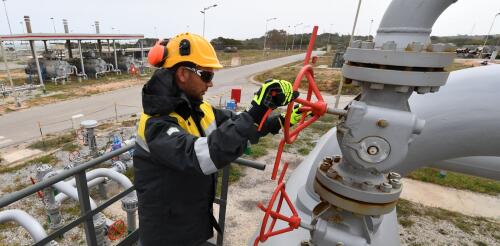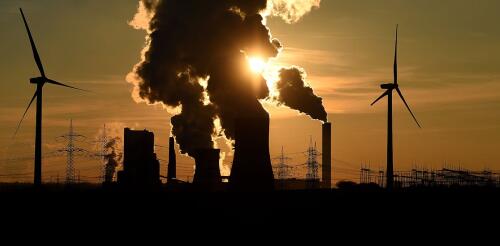Electricity
Texans like to think of their state as the energy capital of the world. But in mid-February 2021, the energy state ran short of energy. An intense winter weather outbreak, informally dubbed Winter Storm Uri by the Weather Channel, swept across the U.S., bringing snow, sleet, freezing rain and frigid temperatures. Texas was hit especially hard, with all 254 counties under a winter storm warning at the same time. Across the state, sustained arctic temperatures froze power plants and fuel supplies, while energy demand for home heating climbed to all-time highs. Cascading failures in the electric power and natural gas sectors left millions of people in the dark for days. At least 246 people died, possibly many more, and economic damage estimates damages reached US$130 billion. Water systems, which require energy for pumping and treatment, also were severely damaged. At least 10 million people were under boil-water notices during and after the storm, sometimes for weeks. Low-incom...
Gas stoves are a leading source of hazardous indoor air pollution, but they emit only a tiny share of the greenhouse gases that warm the climate. Why, then, have they assumed such a heated role in climate politics? This debate reignited on Jan. 9, 2023, when Richard Trumka Jr., a member of the U.S. Consumer Product Safety Commission, told Bloomberg News that the agency planned to consider regulating gas stoves due to concerns about their health effects. “Products that can’t be made safe can be banned,” he noted. Politicians reacted with overheated outrage, putting gas stove ownership on a par with the right to bear arms and religious freedom. CPSC Chair Alexander Hoehn-Saric tried to douse the uproar, stating that he was “not looking to ban gas stoves” and that his agency “has no proceeding to do so.” Neither does the Biden administration support a ban, a White House spokesperson said. Nevertheless, congressional Republicans raced to t...
Russia’s war on Ukraine has cast a shadow over this week’s meetings of world leaders at the G-20 summit in Bali and the United Nations climate change conference in Egypt. The war has dramatically disrupted energy markets the world over, leaving many countries vulnerable to price spikes amid supply shortages. Europe, worried about keeping the heat on through winter, is outbidding poor countries for natural gas, even paying premiums to reroute tanker ships after Russia cut off most of its usual natural gas supply. Some countries are restarting coal-fired power plants. Others are looking for ways to expand fossil fuel production, including new projects in Africa. These actions are a long way from the countries’ pledges just a year ago to rein in fossil fuels, and they’re likely to further increase greenhouse gas emissions, at least temporarily. But will the war and the economic turmoil prevent the world from meeting the Paris climate agreement’s lon...
Americans want their electricity to be cheap, clean and reliable, but that trifecta is becoming more elusive, thanks to climate change. According to a 2021 report by the nonprofit research organization Climate Central, more than 80% of reported major outages across the U.S. from 2000 through 2021 were caused by weather extremes, such as heat waves, wildfires and tropical storms. We are an economist and an electrical engineer investigating how increased use of two-way smart meter technology can be used to reduce greenhouse gas emissions from the electricity sector and help the economy withstand climate-driven weather extremes. As we see it, adapting the power system to increasingly volatile weather will require a combination of user-friendly technologies and economic incentives. From January through September 2022, the U.S. experienced 15 weather and climate disaster events with losses exceeding $1 billion each. Some of these events caus...
With the U.S. government promising over US$360 billion in clean energy incentives under the Inflation Reduction Act, energy companies are already lining up investments. It’s a huge opportunity, and analysts project that it could help slash U.S. greenhouse gas emissions by about 40% within the decade. But in conversations with energy industry leaders in recent months, we have heard that financial incentives alone aren’t enough to meet the nation’s goal of reaching net-zero emissions by 2050. In the view of some energy sector leaders, reaching net zero emissions will require more pressure from regulators and investors and accepting technologies that aren’t usually thought of as the best solutions to the climate crisis. ‘Net-zero,’ with natural gas In spring 2022, we facilitated a series of conversations at Penn State University around energy and climate with leaders at several major energy companies – including Shell USA, and electric u...




